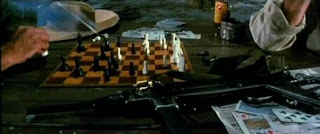In the rich history of the game of chess, games have been
won in many curious & devious ways but to win a game without touching a single
piece is taking it bit too far.
But there is a way, albeit using a slight technicality in chess terms. In chess terminology, a pawn is
technically not a ‘piece’. Bishops & Knights are minor pieces. Queens &
Rooks are major pieces. But pawns are.... just pawns.
But has there ever been a game when a player won by exclusively moving his pawns?

















